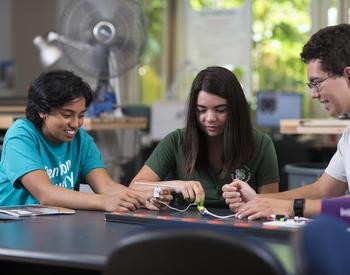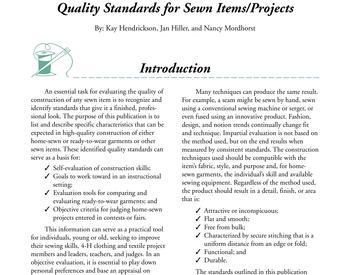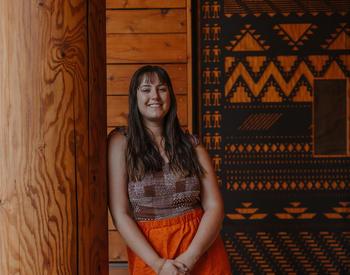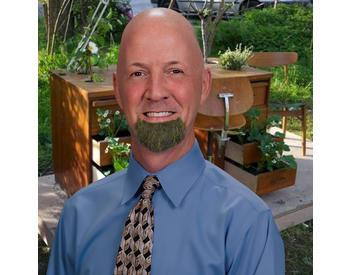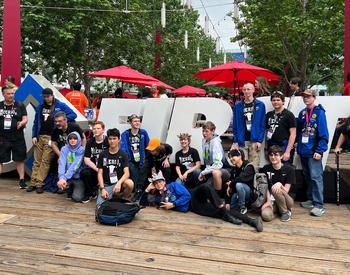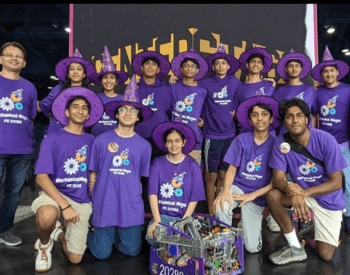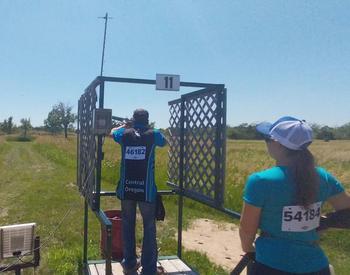THE DALLES, Ore. – Lu Seapy, Oregon State University Extension’s 4-H youth development STEM educator in Wasco County, tends to stay busy. She supports up to 12 robotics and computer science teams at any given time, and her six after-school programs involve nearly 100 students.
And the COVID-19 crisis hasn’t slowed her down much.
After quickly launching three online classes within days of Gov. Kate Brown’s stay-at-home order for Oregonians, Seapy is introducing additional classes on sewing and gardening.
The sewing essentials class will accommodate students who have sewing machines as well as those who stitch by hand. The class is also open to non-4-H participants, and has been expanded to include students from Sherman and Hood River counties. Participants in the sewing class will receive kits with patterns, fabrics and tools that will allow them to make a face covering.
The gardeners will get seeds, soil and other items to help them get started.
Seapy said it was imperative to swiftly set up distance learning options when the pandemic restrictions started.
“We wanted to make sure we didn’t lose the students we were already working with,” Seapy said. “We knew we wanted to keep kids connected, learning and engaged, and to do that, we knew we had to move quickly. The longer kids are out of classes, the harder it is to get them back.”
While planning for this new paradigm, Seapy and her colleagues at Wasco County 4-H focused on STEM classes that could be set up quickly and had lots of free online resources.
The Girls Who Code club started March 20 for girls grade 6 and up. It meets once a week, and participants work together to solve a problem and learn coding skills. The Coder Club, meanwhile, meets on Mondays and Thursdays. Participants learn Scratch, a free programming language that allows students to create their own interactive stories, games and animations that they share with the class. The third course, VEX Robotics, meets twice a week, and participants use the Python programming language in the Robot Mesh Studio environment.
“We initially went with coding courses because there were good training materials and how-to videos available for these classes,” Seapy said, adding that dozens of students have signed up for the initial offerings, and the wide age range of the participants allows older students to mentor the younger ones.
“Kids really love to have that communication and interaction with their peers,” Seapy said.
The largest course has 18 students. The classes follow a rough pattern: 10 minutes of group sharing and updates, a lesson that can last up to 20 minutes, time in breakout rooms with a smaller group, and finally another sharing time before the class ends. Every day is different, and the online class is often broken up by periods of focused concentration as students work individually.
The greatest challenge, Seapy said, is finding tools that are free for everyone. She also has some more advice for Extension professionals delivering online instruction:
- Teach a subject that you love and that already has a wealth of online learning tools, such as videos and tutorials. You don’t want to be the sole creator and distributor of your learning materials.
- Schedule a separate time for participants to get familiar with the online learning environment. “We try to do onboard sessions before the class starts so people don’t get anxious about the technology. You don’t want technical challenges to a student’s first experience with your class,” Seapy said.
- Work with your community partners. When Seapy was getting the word out about the sewing class, for example, she turned to OSU Extension’s Open Campus Juntos program for help translating the flyers and registration forms into Spanish.
- Share your resources. Seapy puts all of her learning materials in a Box folder so people can see what she is doing and have access to her documents.
- Choose the right technology. Seapy uses the Google Classroom learning management system because most kids are already using it, and it interfaces well with Zoom, the cloud platform for video and audio conferencing. Students sign up for classes through simple Google Forms that create a spreadsheet of participants.
- Plan for extra prep time. If you normally take an hour to prepare for a face-to-face class, you’ll probably need two hours for an online class. It also takes longer to prepare the learning management system. “You’re looking at about 14 hours to go online with a class because you have to market, recruit and measure participants,” she said.
Seapy calls the new classes she’s adding “Phase 2” of Wasco Extension’s distance learning efforts. In addition to the sewing and gardening classes, she wants to start cellphone photography and graphic design classes.
She considers career-based education vital.
“Even though our districts might only have 300 students in them, we still want to provide educational experiences that prepare kids for our growing high-tech industries. This current situation teaches us how important it is to have strong technology skills,” Seapy said.
